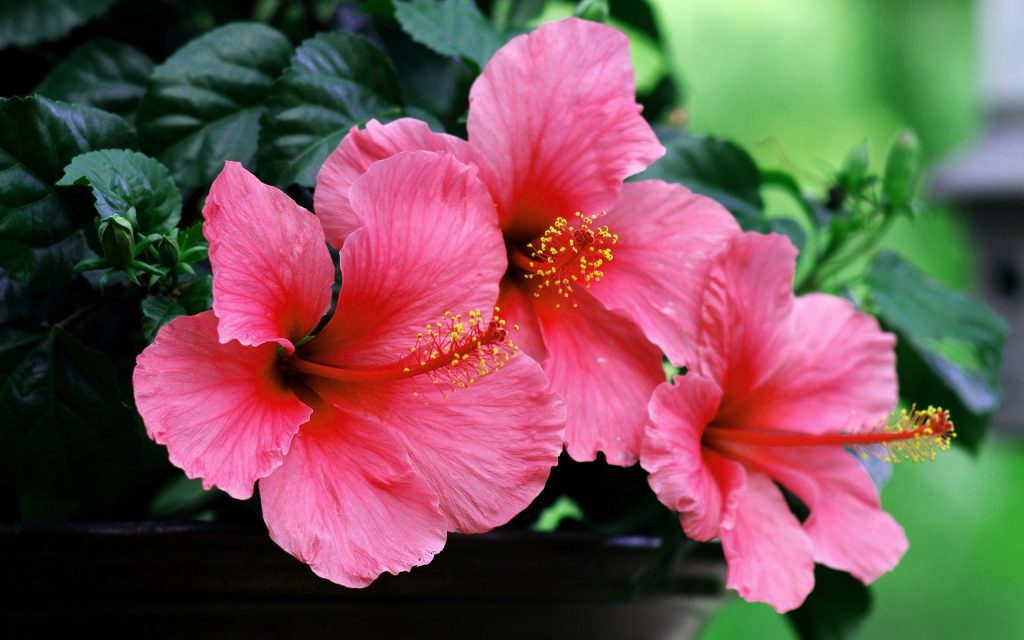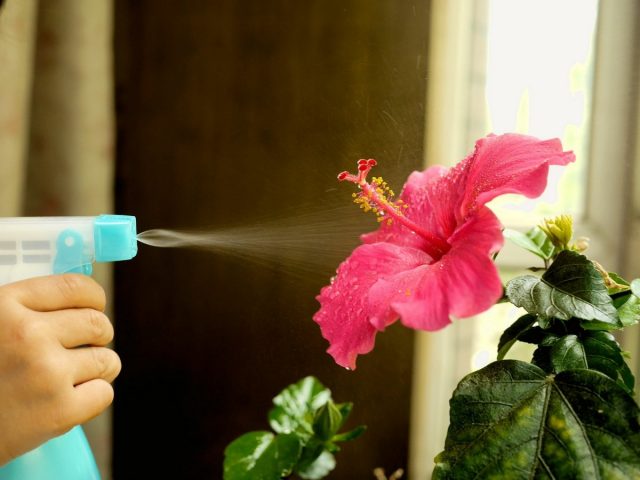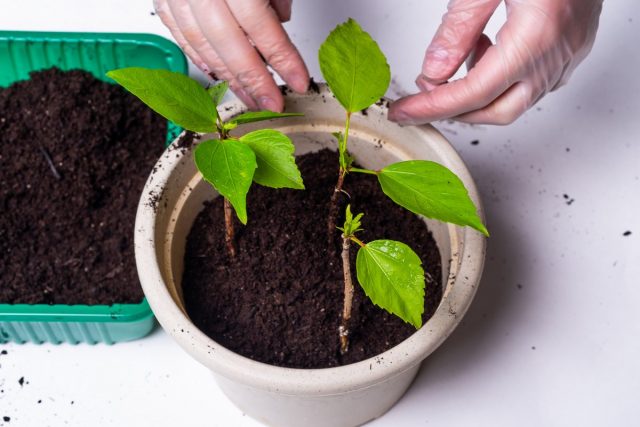The pink hibiscus flowers have become the main attraction of the garden. Hibiscus in pots best reveal their ability to bloom profusely and for a long time in the garden in the summer. But even indoor plants are amazingly good.
They need careful care and watering without fail, but, except for their love of moisture and fear of cold, they have no whims. Fast-growing and colorful, they add joyful lushness to any interior.
Table of Contents
Description Of The Pink Hibiscus Flower
The status of modern pink hibiscus as a beautifully flowering indoor plant is undeniable, but the greenery of hibiscus is underestimated. Glossy and fresh, it looks, although rustic, but elegant.
The pink hibiscus flower or Pink Chinese rose from the Malvaceae family ( Malvaceae ), depending on their formation, can be shrubs or transform into trees and strict standard forms.
Their height is determined by pruning and can either be limited to a modest 50 cm or exceed 2 meters.
Hibiscus leaves are oval or ovate with pointed tips and beautifully serrated edges. They are simple, but very bright thanks to the beautiful surface shine and rich, medium green, cool color.
The flowering of indoor hibiscus can last from February to October. Almost all year round, especially if the conditions of their maintenance are close to ideal, and in winter they have enough light.
Double, semi-double, and simple gramophone flowers are often decorated with luxurious ruffles and fringe along the edge and always surprise with the purity and brightness of their shades.
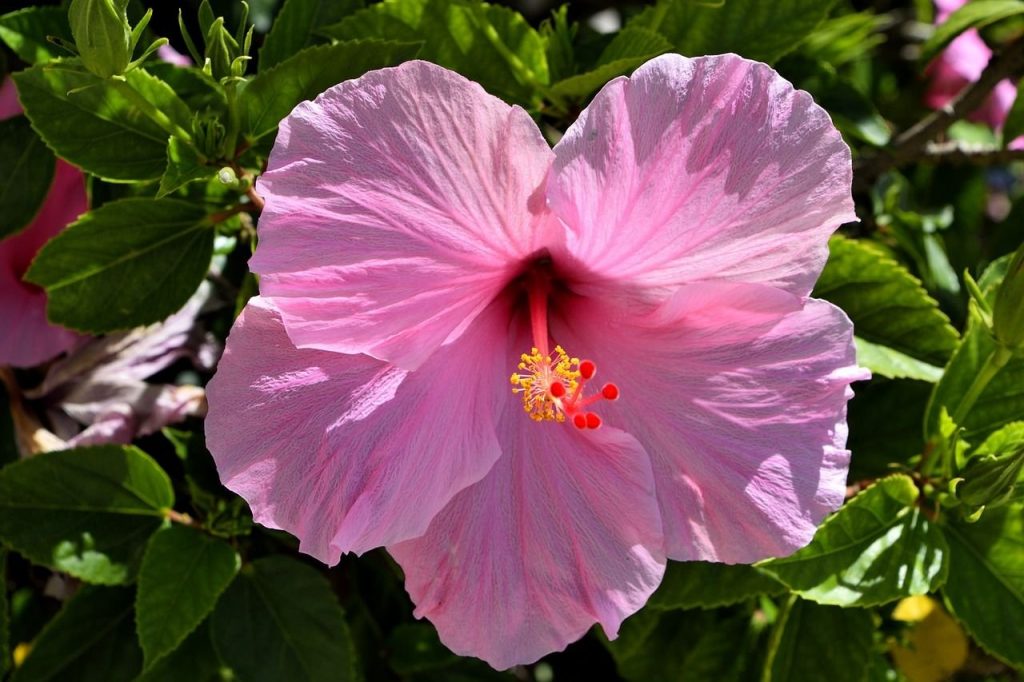
the colors of hibiscus flowers come in a striking variety. The diameter of the funnel-shaped flowers with a darker spot in the throat and beautiful fused long stamens can exceed 10 cm. The flowers last only a couple of days.
Particularly popular today are hybrids (including groups that retain flowers longer) and abundantly flowering varieties ( Long Life Series, Longiflora, Multiflora ).
Growing Conditions
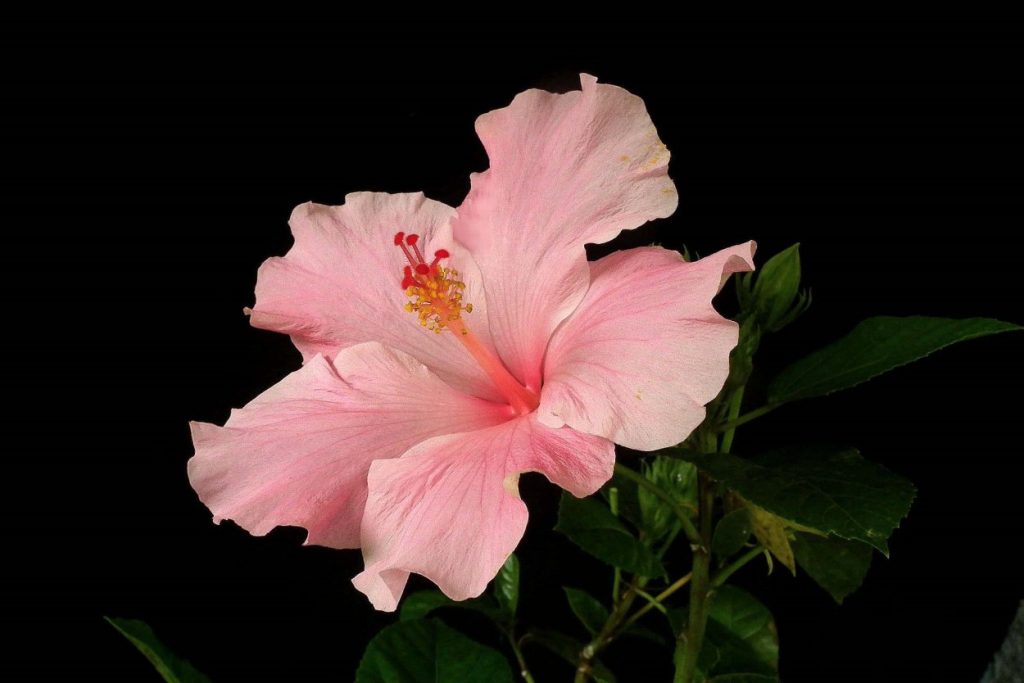
Heat-loving pink hibiscus loves stability and fresh air. It can decorate any interior, but placing the bush far from the window will not work.
Lighting and Placement
Light-loving, but not sun-loving pink hibiscus flowers will prefer the brightest diffused lighting possible, without direct rays. If the size allows, it is better to display them on the eastern and western window sills.
Large pink hibiscus is placed as close to the windows as possible so that air can circulate freely around the bushes.
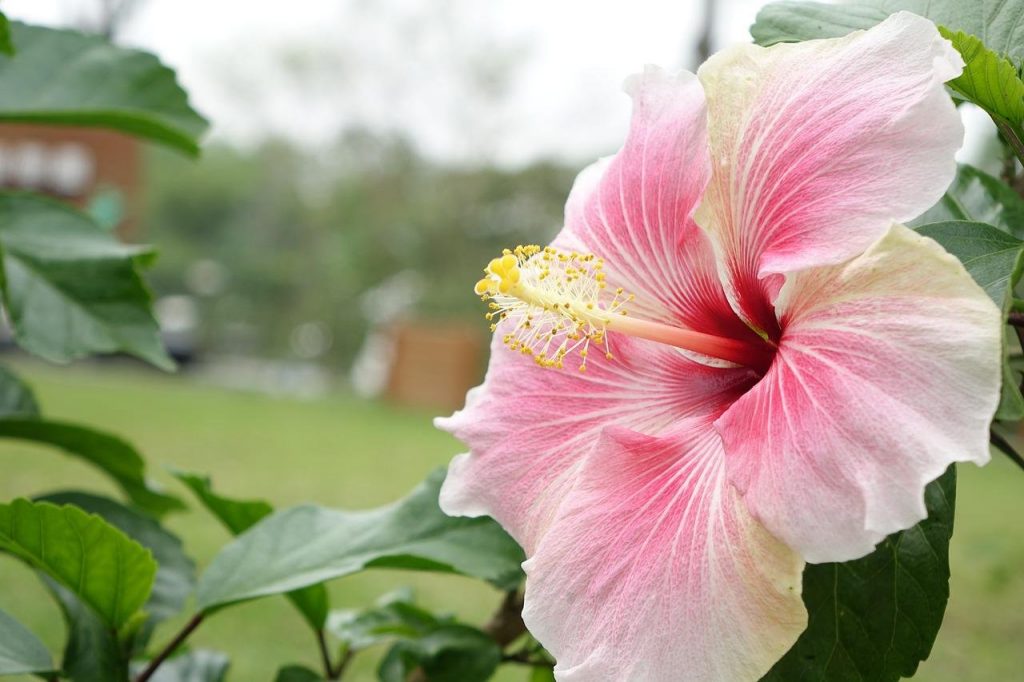
For the winter, it is worth taking all available measures to increase lighting to the usual level by moving it to southern window sills or adding additional lighting.
True, the pink hibiscus flower does not like changing places. You need to rearrange the plant very carefully, increasing the air humidity. During budding and flowering, even turns can result in the dropping of buds.
Temperature and Ventilation
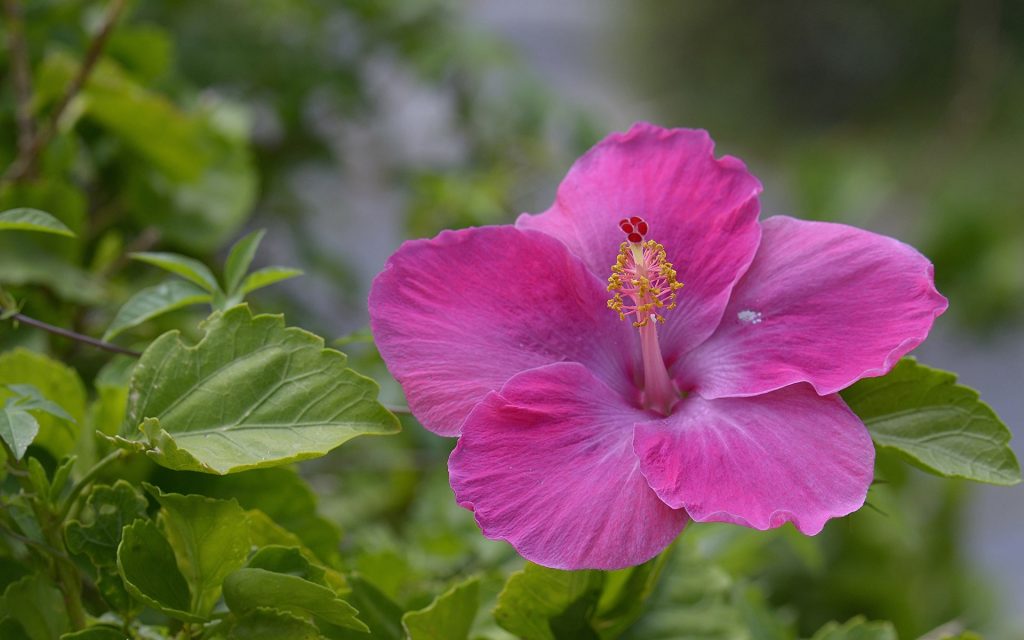
The pink hibiscus flowers do not like heat, but they are not afraid of rising temperatures if there is sufficient air humidity. They grow best at 18-25 degrees.
Even during the long winter months, it is best to keep these readings below 15 degrees to preserve foliage (the absolute minimum is 10 degrees).
The optimal temperature for wintering pink hibiscus is 16-18 degrees; warm conditions must be compensated by increasing air humidity.
Sudden temperature changes usually cause the shedding of some leaves and buds.
While shielding pink hibiscus from drafts is advisable, it’s essential to provide them with adequate fresh air for proper development.
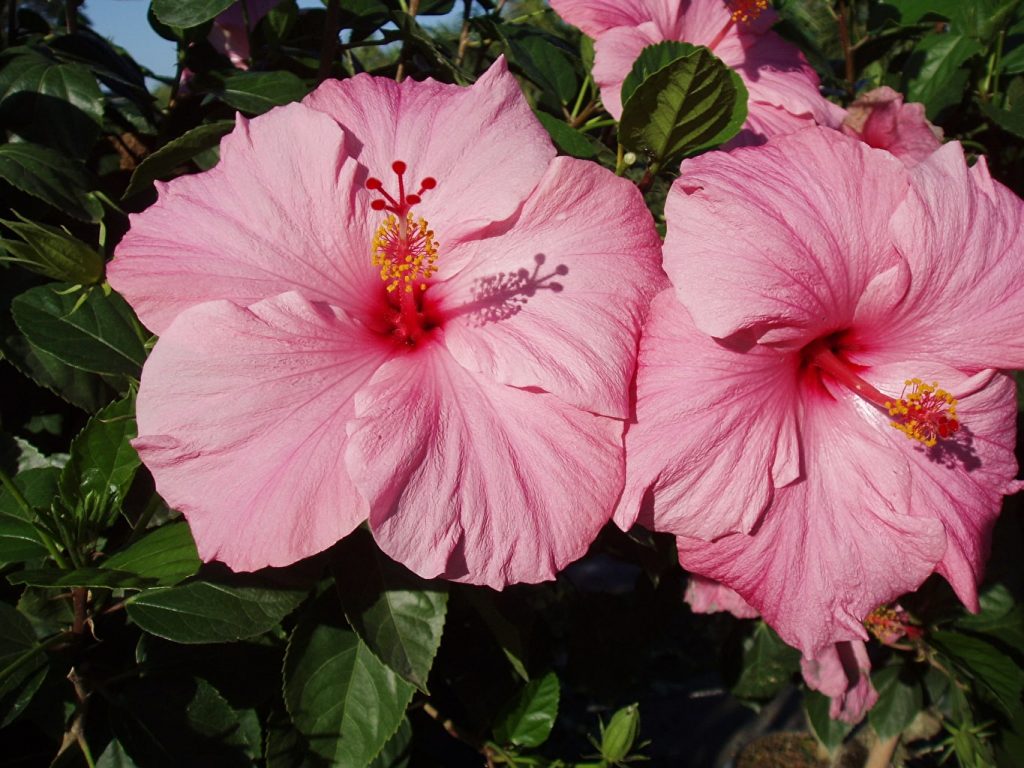
In the summer, they can be taken out into the garden, protected from direct sun and choosing protected warm places.
Indoor Care
The pink hibiscus instantly reacts to carelessness by dropping buds and flowers, and major problems in care can result in complete loss of foliage. This plant requires attention, but its care is more standard than complicated.
Watering and Air Humidity
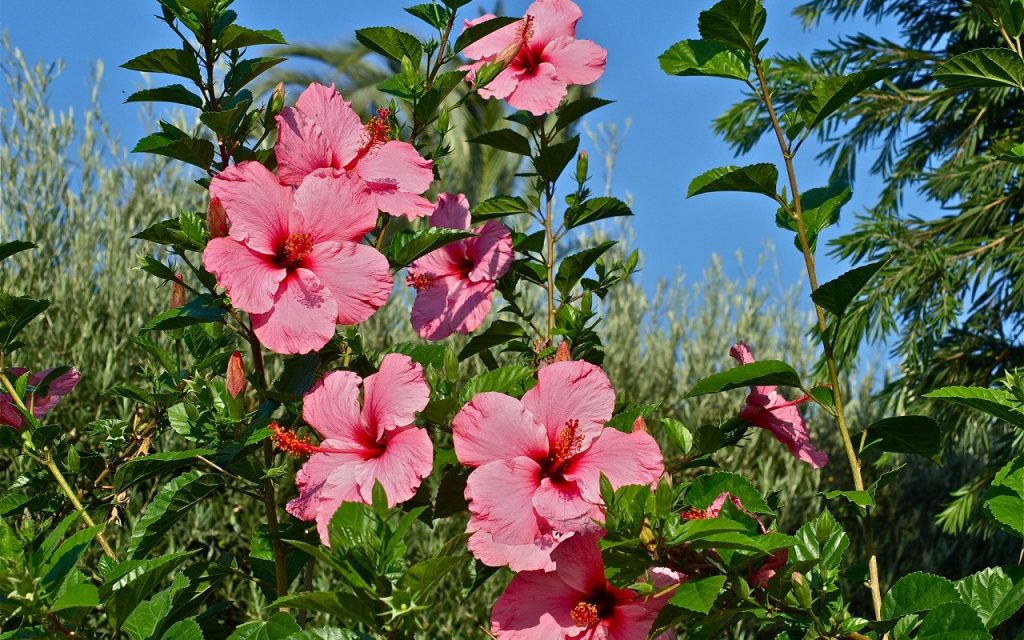
The moisture-loving nature of pink hibiscus should not be underestimated. They do not tolerate mistakes with watering and painfully tolerate even slight drying out of the soil, signaling the withering of leaves and shedding of buds.
During the period of active growth, pink hibiscus is watered frequently and abundantly, allowing only the top of the substrate to dry out.
Do not let the situation become too damp and allow water to stagnate in the pans. As soon as the pink hibiscus begins its dormant period, watering is reduced, making it scarce, but not allowing the soil to dry out completely.
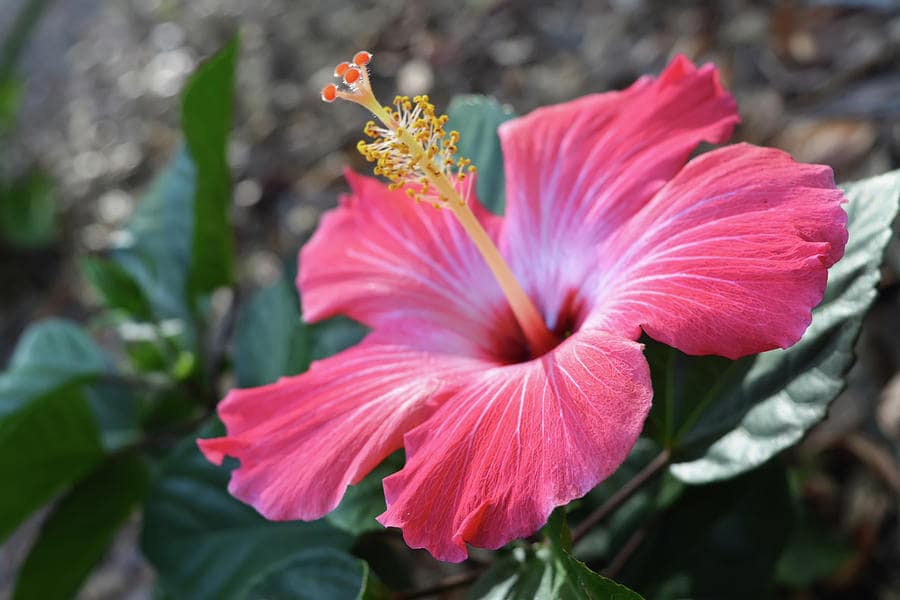
For pink hibiscus, it is better to provide at least average air humidity (ideal – 60%). The hotter it is, the higher these indicators should be. pink hibiscus cannot stand in proximity to air conditioners and radiators.
Spraying is acceptable and desirable, but not at the budding and flowering stage. The best option is to install humidifiers – from professional ones to trays with wet pebbles.
The pink Hibiscus loves showering. Dust from leaves should be removed regularly – manually, with a damp sponge on small plants, or by washing large ones with warm water.
Top Dressing And Fertilizer
As soon as the rapid growth of pink hibiscus flowers begins, they need to begin active frequent feeding – every week with a half-reduced dose or every 2 weeks – full, until the end of flowering.
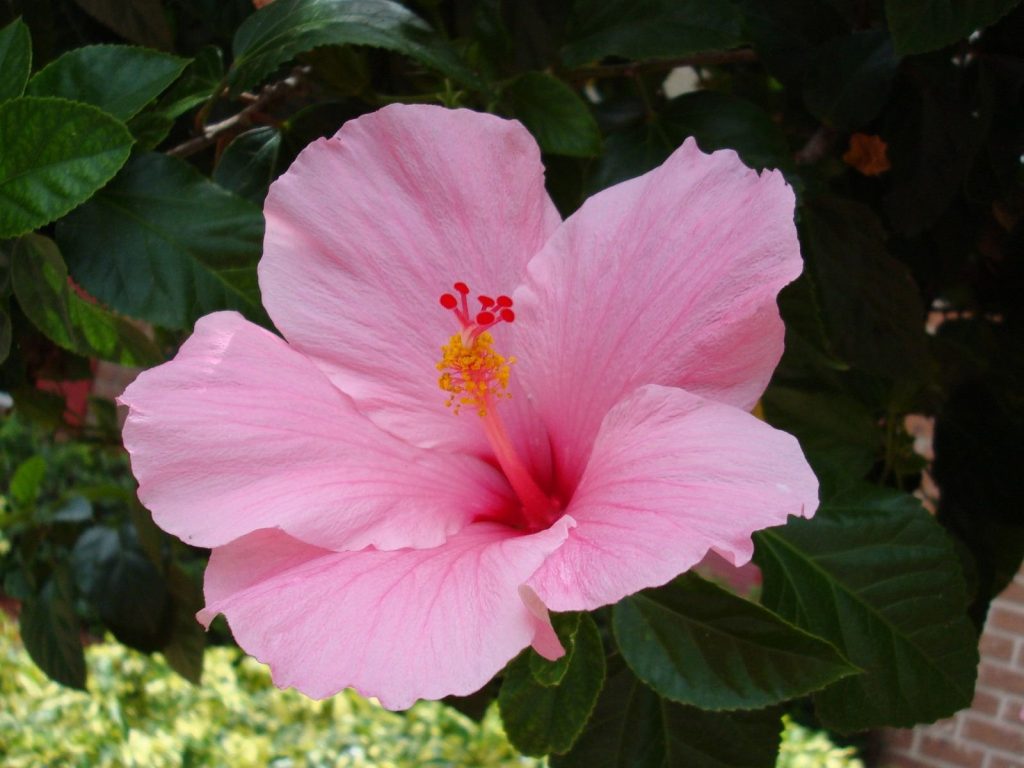
If flowering continues even in winter, fertilizing is reduced by 3-4 times but does not stop.
For pink hibiscus flowers, the presence of iron and magnesium in fertilizers is very important; you should always check the composition of microelements.
Fertilizers for flowering crops are suitable for them. Excess nitrogen leads to rapid growth to the detriment of flowering, but you should not completely exclude it from fertilizing (its lack causes yellowing of the leaves and exposure of the bottom of the bushes). You can alternate liquid and foliar feeding.
Pruning and Shaping
The pink hibiscus requires regular pruning to bloom. Sanitary cleaning can be carried out at any time, removing damaged and dry leaves and branches, as well as unproductive, weak shoots, and “tops”.
But the main pruning is best done in the spring, with the first signs of growth – shortening all shoots to 2-3 buds or allowing the plant to grow, limited to pinching. For strict shapes, the haircut is carried out along the desired contour.
Transplantation
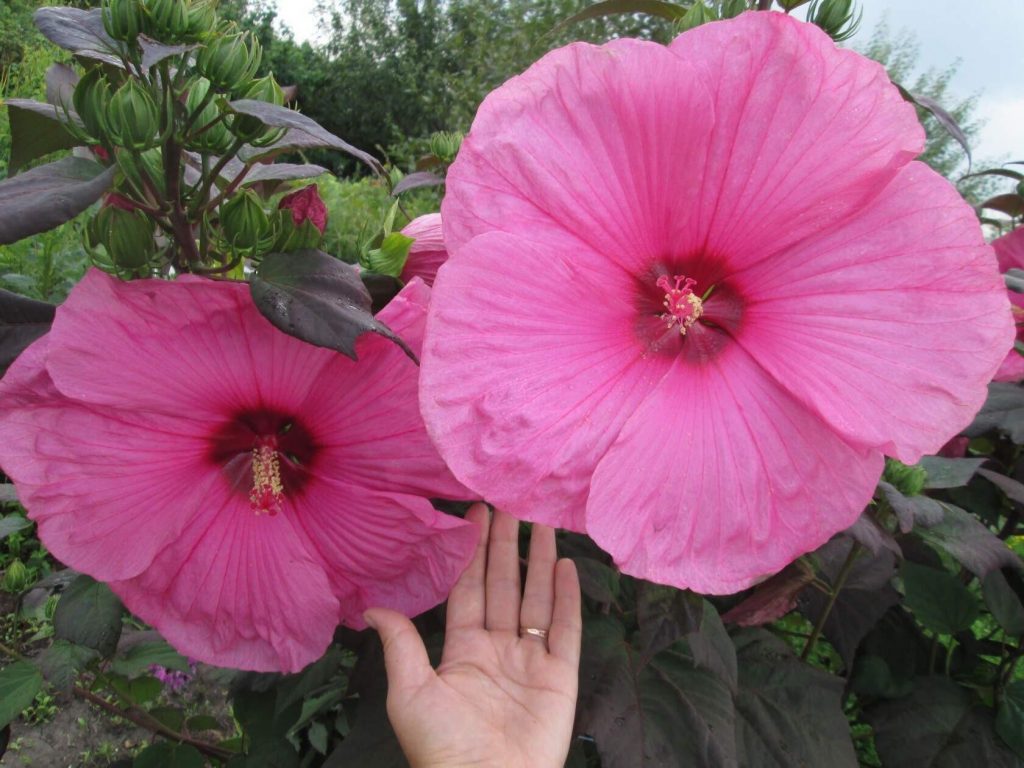
The hibiscus flower rolls over, carefully handling the roots. Transshipment is carried out when old containers become too cramped (once every 2-3 years). The best time to transplant pink hibiscus is February.
These plants need stable, deep containers and a high layer of drainage. pink hibiscus requires fairly large containers, but you should not increase them by more than 4 cm.
In crowded conditions, hibiscus grow and bloom poorly, but even if there is too much soil, flowering cannot be achieved. For normal development, a “golden mean” is needed.
You can use any loose substrate with a pH of about 6.0. It is better to add loosening additives and charcoal to ready-made soil mixtures.

In years without replanting, the top 4-6 cm of soil for the plant is replaced with fresh and nutritious substrate.
After transplantation, the pink hibiscus flower needs gentle watering and lighting with high air humidity.
Diseases, Pests, And Problems In Growing
Except for rot due to waterlogging, pink hibiscus is resistant to disease. But pests – aphids, scale insects, whiteflies, spider mites – are found on them quite often. Simple control methods are ineffective; it is better to immediately use insecticides on hibiscus.

The Hibiscus flower always reacts violently to major mistakes in care, dropping leaves; small mistakes may not be noticed, but only under other ideal conditions. Most often, problems are associated with the falling of buds and parts of the foliage.
They may not open due to lack of moisture, fertilizer, or cold. Any temperature fluctuations, moving and turning, poor lighting, insufficient fertilizing, or too much drying of the soil cause mass abscission. Hibiscus is prone to chlorosis, which occurs as a result of watering with soft water or from a lack of iron.
Propagation
The main method of obtaining offspring from pink hibiscus is cuttings. The tops of young shoots are rooted under a cover in light soil or water, avoiding waterlogging and drying out.
Cross-pollination is required to produce seeds. Purchased seeds are used fresh. Hibiscus is sown in the same way as most gardeners – shallowly, under glass, in light soil. For germination, you will need stable humidity and a temperature of 25-28 degrees Celsius.


